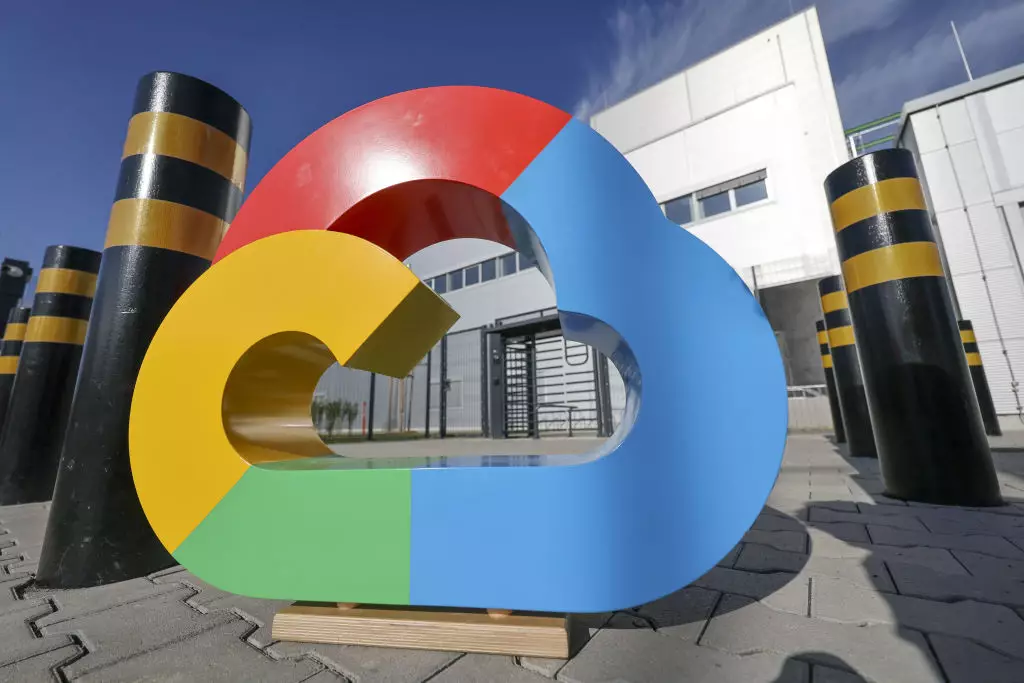In the fiercely competitive arena of cloud computing, Google Cloud is making audacious moves that could redefine its position against industry giants like AWS and Microsoft Azure. The recent onboarding of rapidly ascending AI startups such as Lovable and Windsurf signals more than just individual client wins; it underscores Google’s strategic aspiration to reorient its cloud business as a core driver of growth and innovation. This decisive shift is driven by Google’s recognition that the future of AI—its most lucrative and transformative technology—will predominantly be built on robust, scalable cloud infrastructure.
What differentiates Google’s approach here is its focus on fostering a startup ecosystem that nurtures emerging AI firms. By offering generous credits, tailored infrastructure, and targeted partnerships, Google is actively cultivating a niche of future industry leaders. The partnerships with Lovable and Windsurf, although modest in current financial magnitude, reflect Google’s foresight in betting on promising startups poised to scale. These alliances aren’t just about fleeting contract wins; they are strategic investments in the building blocks of an AI-driven economy where Google aims to secure a dominant foothold.
Harnessing AI Innovation to Fuel Cloud Growth
Google’s aggressive push into AI is both a reflection of market realities and a calculated move to elevate its cloud platform. As AI startups like Lovable and Windsurf leverage Google’s Gemini models—state-of-the-art generative AI frameworks—it becomes evident that Google’s investments in AI research and infrastructure are paying dividends. The synergy is apparent: startups depend on the cloud for intensive training and fine-tuning tasks that are computationally expensive, and Google’s infrastructure offers them an edge with optimized GPU clusters and scalable compute resources.
This strategy isn’t just about catering to startups—it’s about building an ecosystem that can eventually feed Google’s larger AI ambitions, including its Gemini models and DeepMind’s breakthroughs. The fact that Google Cloud now claims partnerships with nine of the ten leading AI labs, including OpenAI and Safe Superintelligence, positions it as a key player in shaping AI’s future. Such strategic collaborations motivate a virtuous cycle: the more startups choose Google Cloud, the more innovative solutions become integrated into Google’s AI portfolio, creating a feedback loop that could eventually propel Google Cloud beyond its current second-tier status.
The Market Opportunity and Competitive Edge
The rapid growth of the cloud industry, with projections exceeding $400 billion by 2025, provides fertile ground for Google to expand its influence. Google’s recent efforts, such as the inaugural Google AI Builder’s Forum, serve as platforms to amplify its presence in the AI startup landscape. The gathering of hundreds of startup founders signals an ambition to be seen not just as a service provider but as a strategic partner invested in the success of AI pioneers.
What sets Google apart from its competitors isn’t merely technology—though its Gemini models are impressive—it is its willingness to invest heavily in ecosystems, rewards, and exclusive tools like dedicated Nvidia GPU clusters. Its “Google for Startups Cloud Program,” offering $350,000 in credits, exemplifies this bold, risk-taking strategy that appeals to startups eager to scale without breaking the bank. Such incentives are crucial in the startup world, where initial funding and infrastructure costs often determine survival.
Importantly, Google’s focus isn’t solely on immediate revenue. Instead, it is laying the groundwork for a future in which cloud services become embedded in the DNA of AI innovation. Its investment in nurturing startups suggests a long-term game plan: dominate the cloud space by becoming the infrastructure backbone for the next generation of AI marvels. This competitive edge—blending strategic partnerships, technological leadership, and targeted incentives—could allow Google Cloud to challenge industry incumbents more aggressively in the coming years.
The Stakes of AI and Cloud Synergy
The enterprise AI landscape isn’t just about technological prowess; it’s fundamentally about cost and scalability. Training and running AI models are exorbitantly expensive endeavors that few companies can sustain without cloud support. Google Cloud’s emphasis on providing scalable, specialized infrastructure not only addresses this challenge but transforms it into an opportunity. As AI models grow in complexity, the cloud’s role becomes more critical—if not indispensable.
By capitalizing on this demand, Google is positioning itself at the confluence of two transformative trends: AI revolution and cloud dominance. Its strategy to attract early-stage startups isn’t merely a growth tactic; it’s a deliberate move to capture the future market share of an industry destined for explosive growth. Given the trajectory of AI and the cloud market, Google’s recent initiatives suggest it might finally be overcoming its historical lag behind AWS and Microsoft, pivoting instead as a serious contender ready to reshape the competitive landscape.
The question remains whether Google’s bold investments and ecosystem strategies will translate into durable leadership. Evidence so far indicates that the company recognizes the gravity of the moment and is willing to outthink, outspend, and outmaneuver its rivals. If this momentum continues, Google Cloud could emerge as the dominant platform powering the world’s most groundbreaking AI innovations—the fundamental building blocks of tomorrow’s digital age.

